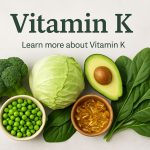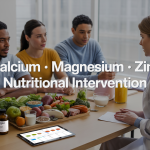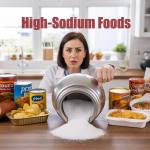Iron keeps your body running like a well-oiled machine, but many people don’t realize just how critical this mineral is for their daily health and energy levels. This guide is for anyone who’s ever felt unexplainably tired, struggled with focus, or wants to understand why iron matters so much for their overall wellness.
We’ll explore how iron deficiency can silently sabotage your health in ways you might not expect, from brain fog to weakened immunity. You’ll also discover the daily iron requirements your body needs to thrive and learn about powerhouse foods that can naturally boost your iron levels without relying on supplements alone.
Essential Role of Iron in Human Health
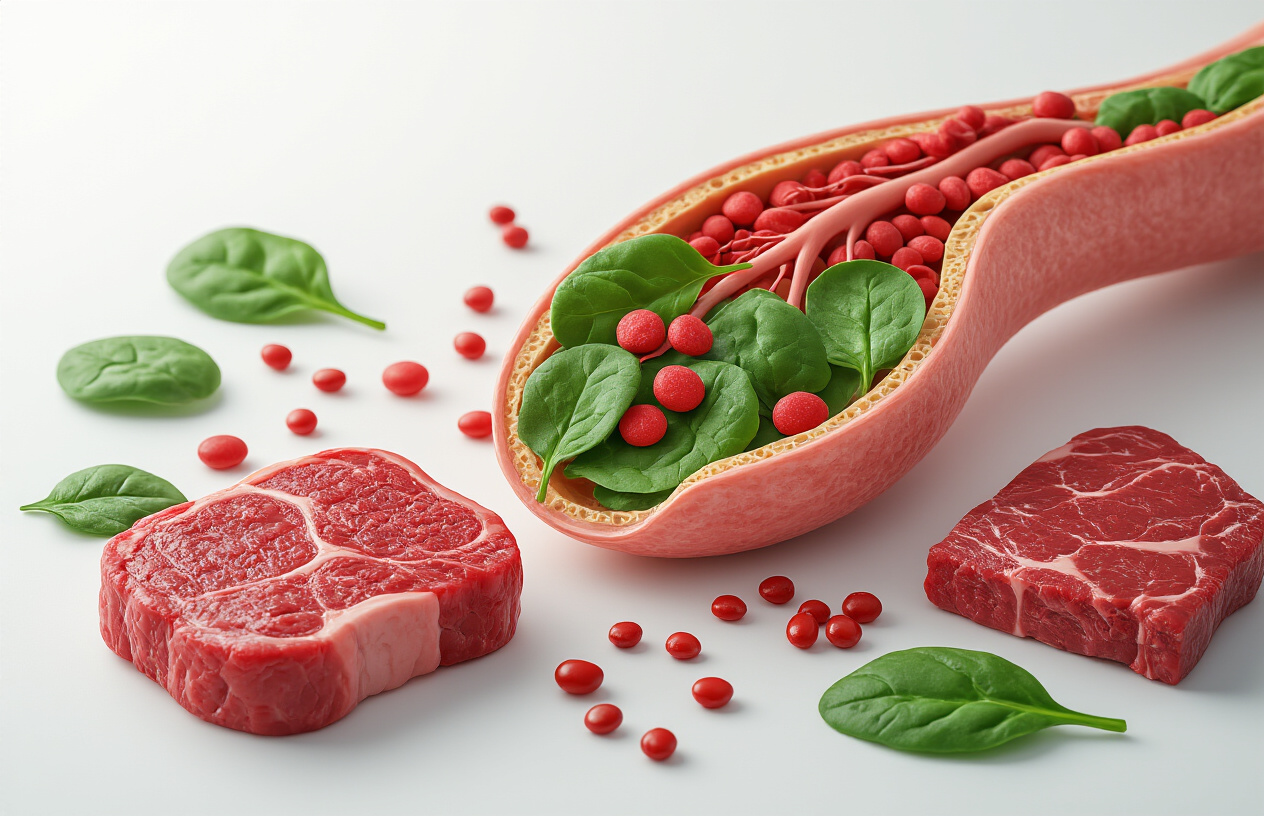
Oxygen Transport Throughout Your Body
Iron serves as the cornerstone of your body’s oxygen delivery system. Hemoglobin, the protein in red blood cells that carries oxygen from your lungs to every tissue, depends entirely on iron to function. Each hemoglobin molecule contains four iron atoms that bind oxygen molecules and release them where needed most. Without adequate iron, your body can’t produce enough healthy red blood cells, leaving your organs and muscles starved for oxygen.
Your body also relies on myoglobin, another iron-containing protein found in muscle tissue. This protein stores oxygen directly in your muscles, ensuring they have immediate access to oxygen during physical activity. When iron levels drop, both hemoglobin and myoglobin production suffers, creating a cascade of problems that affect every aspect of your physical performance.
Energy Production and Metabolism Boost
Iron plays a critical role in cellular energy production through the electron transport chain. This process occurs in your mitochondria, where iron-containing enzymes help convert nutrients into usable energy. Without sufficient iron, your cells struggle to produce ATP, the energy currency your body needs for everything from basic cellular functions to intense physical activity.
The connection between iron and metabolism runs deeper than energy production alone. Iron-dependent enzymes participate in numerous metabolic pathways, including:
- Fat oxidation and breakdown
- Carbohydrate metabolism
- Protein synthesis
- DNA production and repair
When your iron stores run low, these metabolic processes slow down, leaving you feeling exhausted and sluggish even during routine daily activities.
Immune System Strengthening
Your immune system depends on iron to function at peak performance. White blood cells, your body’s primary defense against infections, require iron to multiply rapidly when fighting off pathogens. Iron also supports the production of antibodies and helps maintain the integrity of your skin and mucous membranes, which serve as your first line of defense against harmful microorganisms.
Iron deficiency weakens your immune response in several ways:
- Reduced white blood cell production
- Impaired antibody function
- Slower wound healing
- Increased susceptibility to infections
Children and pregnant women face particularly high risks, as their immune systems already work harder to support growth and development.
Cognitive Function and Brain Health
Brain tissue contains some of the highest concentrations of iron in your body, and for good reason. Iron supports neurotransmitter production, including dopamine, serotonin, and norepinephrine, which regulate mood, focus, and memory. The brain also uses iron to maintain myelin, the protective coating around nerve fibers that ensures rapid signal transmission.
Iron deficiency can significantly impact cognitive performance, causing:
- Difficulty concentrating
- Memory problems
- Reduced learning capacity
- Mood changes and irritability
- Restless leg syndrome
These effects appear even before anemia develops, highlighting how sensitive brain function is to iron availability.
Iron Deficiency Consequences You Cannot Ignore
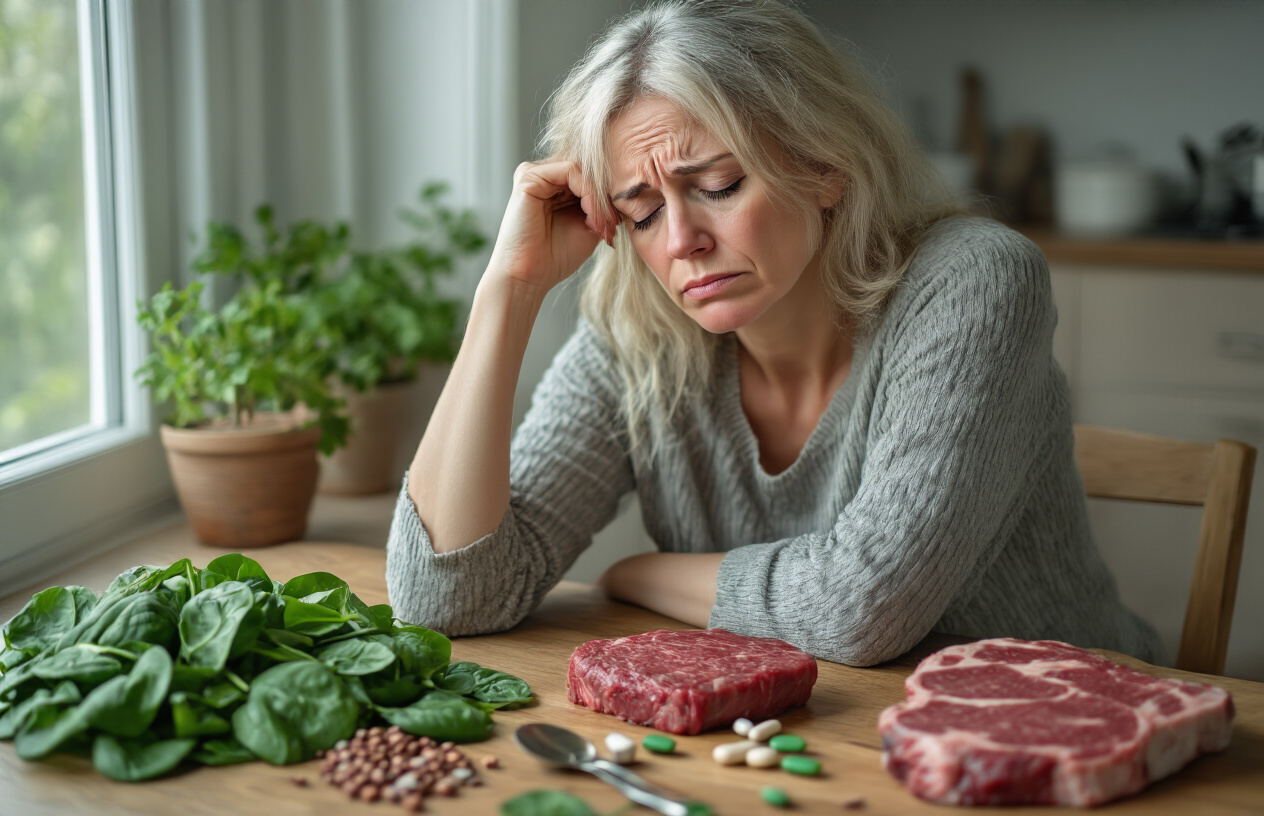
Chronic Fatigue and Weakness
Your body relies on iron to produce healthy red blood cells that carry oxygen throughout your system. When iron levels drop, your muscles and organs don’t get the oxygen they need to function properly. This creates a domino effect that leaves you feeling exhausted, even after a full night’s sleep.
The fatigue from iron deficiency isn’t just feeling a little tired after lunch. We’re talking about bone-deep exhaustion that makes simple tasks feel overwhelming. Climbing stairs becomes a challenge, and you might find yourself getting winded during activities that never bothered you before. Your muscles feel weak and heavy, making everyday movements more difficult than they should be.
Many people mistake this for stress or just getting older, but iron deficiency fatigue has distinct characteristics. You wake up tired, struggle to concentrate at work, and feel like you’re running on empty by mid-afternoon. Even caffeine stops helping because the problem isn’t just being tired – your cells literally can’t get enough oxygen to produce energy efficiently.
Impaired Mental Performance
Iron doesn’t just fuel your muscles – your brain is one of the most iron-hungry organs in your body. When iron stores run low, cognitive function takes a serious hit. Memory problems become noticeable first, with simple tasks like remembering where you put your keys or what you walked into a room for becoming frustratingly common.
Concentration becomes nearly impossible. Reading a book or following a conversation requires enormous effort, and you might find yourself re-reading the same paragraph multiple times. Decision-making suffers too – choices that once seemed straightforward now feel overwhelming and confusing.
The brain fog that comes with iron deficiency is different from regular mental fatigue. Your thoughts feel sluggish and disconnected, like you’re thinking through thick cotton. Students often see their grades drop, while working professionals struggle to keep up with tasks that were once routine. This happens because iron is essential for neurotransmitter production and brain cell energy metabolism.
Children with iron deficiency show particularly concerning effects, including delayed development, learning difficulties, and behavioral problems that can impact their educational progress and social interactions.
Increased Infection Risk
Iron plays a crucial role in maintaining a strong immune system, so deficiency leaves you vulnerable to infections that your body would normally fight off easily. You might notice you’re catching every cold that goes around the office, or that minor cuts and scrapes take longer to heal than usual.
Your immune cells need iron to function properly and multiply when fighting off invaders. Without adequate iron, these cellular defenders become sluggish and less effective. White blood cells can’t respond as quickly to threats, and your body’s ability to produce antibodies decreases significantly.
The infections you do get tend to last longer and feel more severe. A simple cold might linger for weeks instead of days, and you may experience recurring infections in areas like your respiratory tract, urinary system, or skin. Wound healing slows down because iron is necessary for collagen production and tissue repair.
| Common Infection Sites | Normal Recovery | With Iron Deficiency |
|---|---|---|
| Common Cold | 3-7 days | 2-3 weeks |
| Minor Cuts | 5-10 days | 2-3 weeks |
| Respiratory Issues | 1-2 weeks | 3-4 weeks |
This creates a vicious cycle where frequent illness further depletes your iron stores, making recovery even more difficult and leaving you susceptible to the next infection.
Daily Iron Requirements for Optimal Wellness
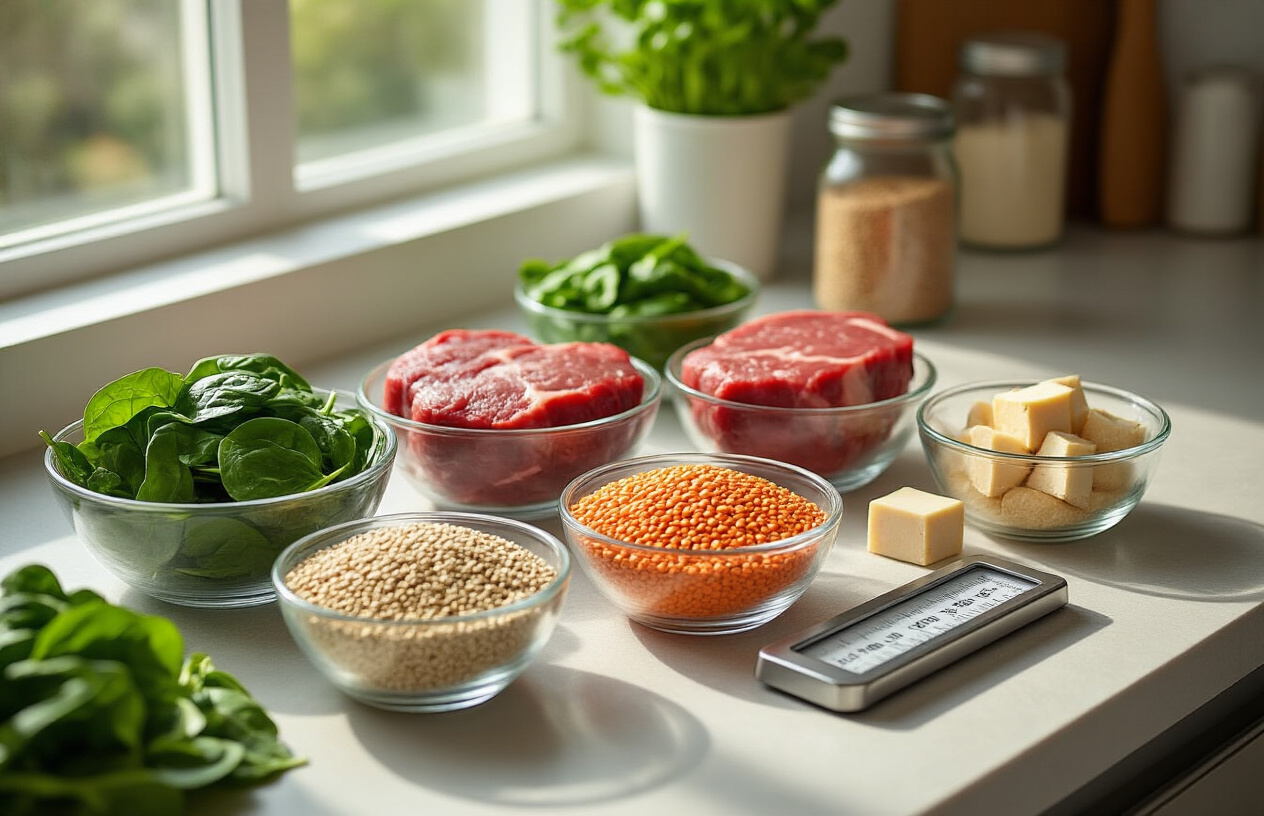
Age-Specific Iron Needs
Iron requirements change dramatically throughout different life stages, making age a crucial factor in determining optimal intake levels. Infants aged 7-12 months need approximately 11 milligrams daily to support rapid growth and brain development. This high requirement stems from their expanding blood volume and the depletion of iron stores inherited from their mothers.
Children between 1-3 years require 7 milligrams daily, while those aged 4-8 years need 10 milligrams. The teenage years bring another surge in iron needs, with adolescents requiring 8-15 milligrams depending on their gender and growth spurts.
Adults generally need 8-18 milligrams daily, but this number shifts significantly after age 51. Post-menopausal women see their requirements drop to match men’s at 8 milligrams daily, while older adults may need careful monitoring as absorption efficiency naturally declines with age.
Gender Differences in Iron Requirements
Women face significantly higher iron demands than men throughout their reproductive years. The monthly menstrual cycle creates ongoing iron loss that requires compensation through dietary intake. Pre-menopausal women need 18 milligrams of iron daily – more than double the 8 milligrams required by adult men.
This gender gap exists because women lose approximately 1-2 milligrams of iron monthly through menstruation, on top of the normal 1 milligram daily loss that both genders experience through skin shedding and intestinal cell turnover. Men’s consistent 8-milligram requirement remains stable throughout most of their adult lives since they don’t experience cyclical iron loss.
The disparity becomes even more pronounced when considering that women typically consume fewer calories than men, making it challenging to meet higher iron requirements through food alone. This biological reality explains why iron deficiency affects women at rates three to four times higher than men.
Special Circumstances Requiring Extra Iron
Pregnancy creates the highest iron demands of any life stage, with requirements jumping to 27 milligrams daily during the second and third trimesters. This dramatic increase supports the expanding maternal blood volume, growing fetal tissues, and preparation for blood loss during delivery.
Breastfeeding mothers need 9-10 milligrams daily, slightly higher than typical adult requirements. Athletes, particularly endurance runners and female athletes, often need additional iron due to increased losses through sweat, foot strike hemolysis, and higher metabolic demands.
Blood donors should pay special attention to iron intake, as regular donations can deplete iron stores over time. People following vegetarian or vegan diets may need 1.8 times the standard recommendations since plant-based iron absorbs less efficiently than iron from meat sources.
Individuals with gastrointestinal conditions like celiac disease, inflammatory bowel disease, or those who’ve undergone gastric bypass surgery often require higher intake levels due to impaired absorption capabilities.
Absorption Factors That Maximize Benefits
Iron absorption varies dramatically based on multiple factors that either enhance or inhibit the process. Vitamin C acts as iron’s best friend, converting iron into a more absorbable form and significantly boosting uptake rates. Consuming just 25-100 milligrams of vitamin C with iron-rich meals can triple absorption efficiency.
Heme iron from animal sources absorbs at rates of 15-35%, while non-heme iron from plants typically absorbs at only 2-20%. Your body’s current iron status also plays a role – when stores run low, absorption rates automatically increase to help restore balance.
Calcium, tannins in tea and coffee, and phytates in whole grains can block iron absorption when consumed simultaneously with iron-rich foods. Timing these inhibitors away from iron-rich meals, even by just one hour, can make a significant difference in how much iron your body actually uses from your food.
Top Iron-Rich Foods to Transform Your Health
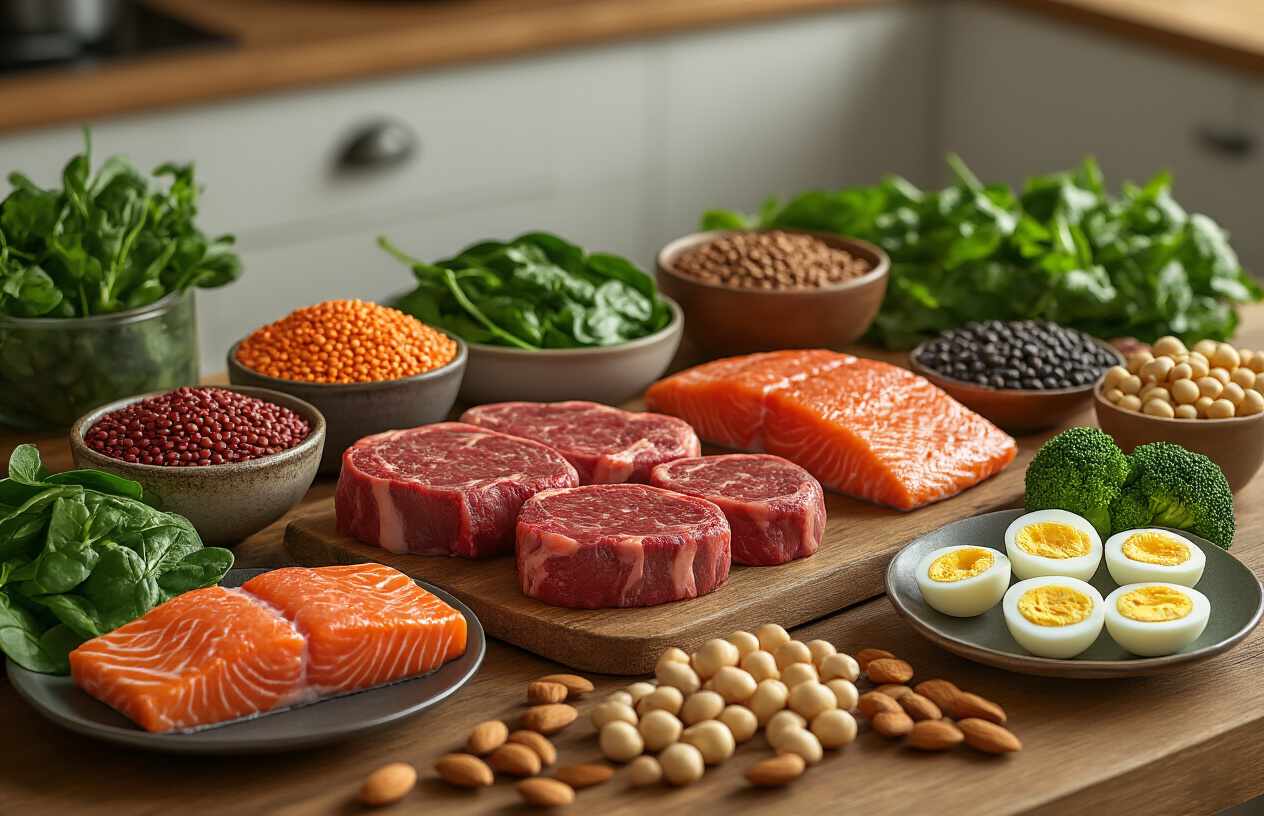
Red Meat and Poultry Powerhouses
Red meat stands as the gold standard for iron content, delivering the most bioavailable form called heme iron. Beef liver tops the charts with an impressive 18mg of iron per 3.5-ounce serving, making it one of nature’s most concentrated iron sources. Regular beef cuts like sirloin and ground beef provide around 2-3mg per serving, while lamb and pork offer similar amounts.
Poultry brings solid iron content to your plate, with chicken liver containing about 11mg per serving. Dark meat from chicken thighs and drumsticks delivers more iron than white breast meat, typically providing 1-2mg per portion. Turkey follows similar patterns, with darker cuts offering better iron content.
Game meats deserve special mention for their exceptional iron levels. Venison, bison, and elk contain significantly more iron than conventional red meat, often providing 3-4mg per serving while being leaner overall.
| Meat Source | Iron Content (per 3.5oz) | Type |
|---|---|---|
| Beef Liver | 18mg | Heme |
| Chicken Liver | 11mg | Heme |
| Ground Beef | 2.5mg | Heme |
| Chicken Thigh | 1.3mg | Heme |
| Pork Chop | 1mg | Heme |
Plant-Based Iron Sources for Vegetarians
Plant foods contain non-heme iron, which requires more strategic consumption but can effectively meet your needs. Legumes lead the plant-based pack, with lentils providing about 6.6mg per cooked cup. White beans, chickpeas, and kidney beans each deliver 3-5mg per serving, making them excellent protein and iron combinations.
Leafy greens pack surprising iron power despite their light weight. Spinach contains 6.4mg per cooked cup, while Swiss chard and kale provide 3-4mg each. Raw spinach has less available iron, so cooking helps concentrate the mineral content.
Seeds and nuts contribute meaningful amounts to your daily intake. Pumpkin seeds lead with 4.2mg per quarter cup, followed by sesame seeds and cashews. Tahini (sesame seed butter) makes an excellent iron-rich spread for sandwiches and snacks.
Ancient grains and pseudo-grains offer substantial iron content. Quinoa provides 2.8mg per cooked cup, while amaranth delivers 5.2mg. These foods also supply complete proteins, making them valuable for vegetarian diets.
Top Plant Iron Sources:
- Cooked lentils: 6.6mg per cup
- Spinach (cooked): 6.4mg per cup
- White beans: 5.1mg per cup
- Quinoa: 2.8mg per cooked cup
- Pumpkin seeds: 4.2mg per 1/4 cup
Fortified Foods for Additional Support
Food manufacturers add iron to many common products, creating convenient ways to boost your intake. Breakfast cereals often contain 4-18mg per serving, with some providing 100% of your daily needs in one bowl. Check labels carefully, as fortification levels vary dramatically between brands.
Enriched bread and pasta contribute steady amounts to your daily total. Most commercial breads provide 1-2mg per slice, while enriched pasta delivers about 2mg per cooked cup. These foods help bridge gaps in your iron intake throughout the day.
Plant-based milk alternatives frequently receive iron fortification. Soy milk typically contains 1-2mg per cup, while oat and almond milk vary by brand. These products help vegetarians and those avoiding dairy maintain adequate iron levels.
Instant oatmeal often comes fortified with iron, providing 4-8mg per packet depending on the brand. This makes breakfast an easy opportunity to start your day with significant iron intake.
Common Fortified Foods:
- Fortified cereals: 4-18mg per serving
- Enriched white bread: 1.9mg per slice
- Fortified oat milk: 1.8mg per cup
- Instant oatmeal: 4-8mg per packet
- Enriched pasta: 2mg per cooked cup
Reading nutrition labels becomes crucial when relying on fortified foods, as iron content varies significantly between products and brands.
Maximizing Iron Absorption for Better Results

Vitamin C Combinations That Work
Pairing iron-rich foods with vitamin C sources creates a powerful absorption boost that can double or triple your iron uptake. The magic happens when ascorbic acid converts iron from its harder-to-absorb ferric form into the more bioavailable ferrous form. This transformation works particularly well with plant-based iron sources.
Try these winning combinations: spinach salad with strawberries, lentil soup with a squeeze of lemon juice, or fortified cereal topped with fresh berries. Even a simple glass of orange juice alongside your iron-rich meal can make a significant difference. Bell peppers, tomatoes, kiwi fruit, and broccoli also pack impressive vitamin C levels that enhance iron absorption.
The timing matters too. Consuming vitamin C-rich foods or drinks within the same meal maximizes the synergistic effect. A cup of orange juice can increase iron absorption by up to 300% when consumed with iron-fortified cereals or plant-based meals.
Foods That Block Iron Absorption
Certain compounds in everyday foods can significantly reduce iron absorption, sometimes by as much as 50-90%. Understanding these inhibitors helps you make smarter meal planning decisions.
Major Iron Blockers:
- Calcium-rich foods: Dairy products, fortified plant milks, and calcium supplements
- Tannins: Coffee, tea, red wine, and dark chocolate
- Phytates: Whole grains, legumes, nuts, and seeds
- Polyphenols: Some fruits, vegetables, and spices
Coffee and tea are particularly problematic because many people consume these beverages with meals. The tannins in these drinks can reduce iron absorption dramatically. Wait at least one hour after eating before having your coffee or tea to minimize this effect.
Calcium deserves special attention since it directly competes with iron for absorption pathways. While both nutrients are essential, spacing them apart optimizes uptake of each. Consider having your calcium-rich foods or supplements between meals rather than with iron-rich dishes.
Timing Strategies for Optimal Uptake
Strategic meal timing can dramatically improve your iron absorption rates. Your body’s natural rhythms and digestive patterns create windows of opportunity for maximum nutrient uptake.
Morning meals often provide the best absorption rates because stomach acid production peaks after overnight fasting. This increased acidity helps convert iron into its absorbable form. Having your most iron-dense meal at breakfast or brunch takes advantage of this natural biological advantage.
Space iron-rich meals at least two hours apart from calcium supplements or high-calcium foods. This separation prevents competition between these minerals for the same absorption pathways. Similarly, avoid taking iron supplements with multivitamins containing calcium, magnesium, or zinc.
Consider the “empty stomach” approach for iron supplements, taking them between meals when possible. This strategy reduces interference from other nutrients and food compounds. However, if stomach upset occurs, taking supplements with a small amount of vitamin C-rich food can maintain good absorption while reducing digestive discomfort.
Cooking Methods That Enhance Iron Content
The way you prepare food can significantly impact its iron content and bioavailability. Smart cooking techniques can boost iron levels while breaking down compounds that inhibit absorption.
Cast Iron Cooking Benefits:
Using cast iron cookware, especially for acidic foods like tomato sauce or citrus-based marinades, increases the iron content of your meals. The longer cooking time and higher acidity levels cause more iron to leach from the pan into your food. Slow-cooking stews, sauces, and soups in cast iron can add substantial amounts of bioavailable iron.
Fermentation and Soaking:
Fermenting grains and legumes, or simply soaking them overnight, reduces phytate levels that normally block iron absorption. Sourdough bread, fermented oats, and properly prepared beans become much more iron-friendly through these traditional preparation methods.
Steam and Sauté Techniques:
Light cooking methods like steaming or quick sautéing preserve vitamin C content in vegetables while making iron more available. Overcooking destroys heat-sensitive nutrients that aid iron absorption, so aim for tender-crisp vegetables that retain their color and nutritional value.
Combining these cooking strategies with smart food pairings creates meals that maximize your body’s ability to absorb and utilize this vital mineral effectively.
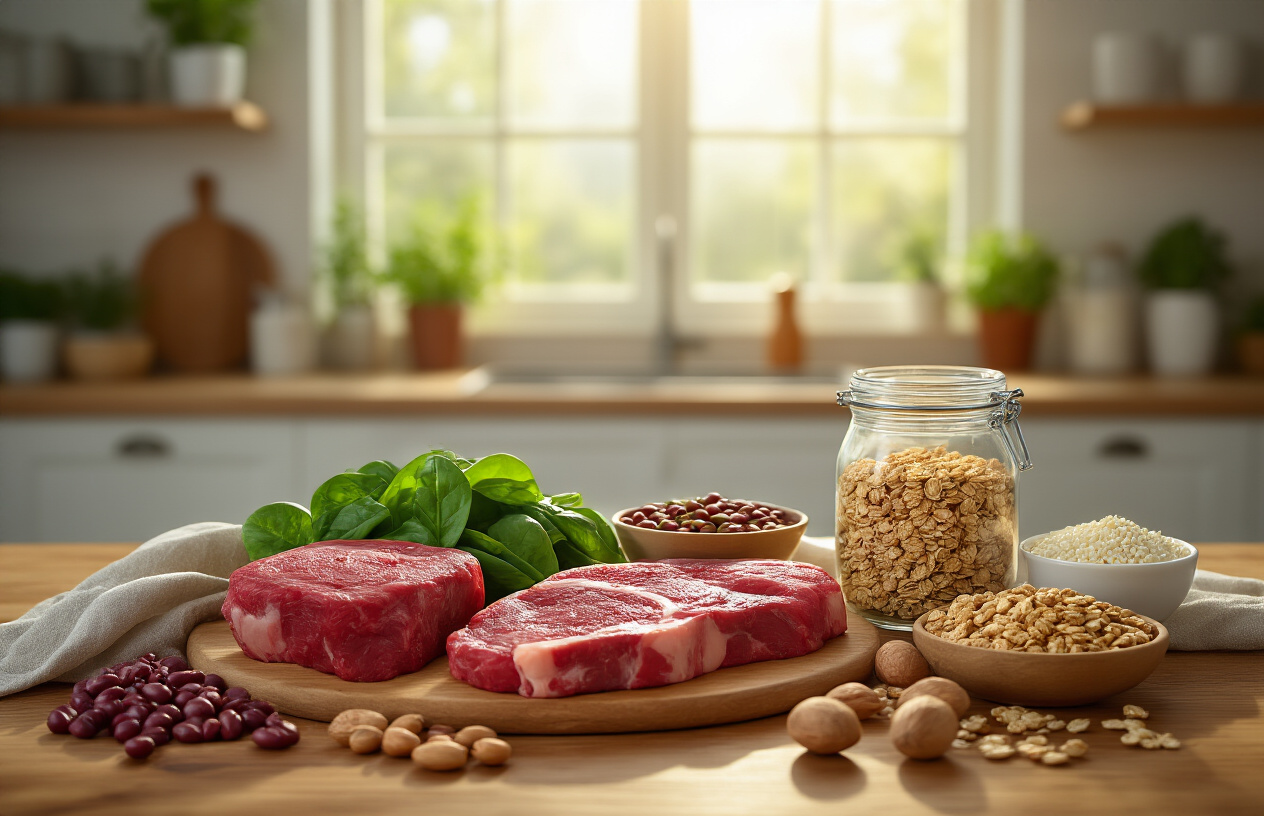
Iron plays a crucial role in keeping your body running smoothly, from carrying oxygen through your bloodstream to supporting energy production and immune function. When you don’t get enough iron, you’ll likely face fatigue, weakness, and other health issues that can seriously impact your daily life. Understanding your daily iron needs and knowing which foods pack the biggest iron punch can make a real difference in how you feel and function.
The good news is that getting enough iron doesn’t have to be complicated. By choosing iron-rich foods like lean meats, leafy greens, and legumes, and pairing them with vitamin C sources to boost absorption, you can easily meet your body’s needs. Don’t let iron deficiency hold you back from feeling your best – start paying attention to this essential mineral today and give your body the fuel it needs to thrive.


